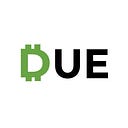3 Sure Methods to Get Your Clients to Pay Their Bills
If you’re a small business owner or freelancer I don’t have to tell you how important it is to get your clients to pay their bills. Without clients paying you, it is possible for it to become a problem for you to pay your own expenses and maintain a positive cash flow. That’s why it’s important for you and each client to iron out, and make clear all of your payment details in writing. Not only does this prevent any confusion, it could be used to your advantage down the road if there is any legal problem.
You can also require a payment up front, like a deposit, down payment, or retainer. For example, you could ask for 50% up front, 25% mid-way, and 25% when completed on larger, lengthier projects. This not only covers some of you expenses, it gives the client some flexibility and prevents you from being stuck with the entire bill if the client doesn’t pay promptly at the end of the transaction.
What happens though if a client still hasn’t paid the bill — even if you have a contract or even a partial payment?
Give these three methods a shot and your client should be paying their bill without any further delays.
Make Use of Technology
It’s the 21st Century. There’s absolutely no excuse for you to be sending out bills in the mail and then waiting for a check to be returned. You can make it convenient for clients to pay their bill with a credit card through a service like Square or by accepting a payment from a third party gateway like PayPal. Giving your client multiple options to pay their bills electronically can ensure that you’ll get paid quickly, sometimes you can receive your payment in just a matter of just minutes, when you send out the invoice.
Besides accepting electronic payments, you can use technology to set-up recurring billing. Due.com, for example, is an invoicing software system that has a recurring billing option. This option will store your client’s credit card or bank account which is then charged each month. Besides automatically deducting that amount from client without sending an invoice, automating your bills lets the system follow-up with your clients for you since it will keep “pinging” (reminding) the client until the bill has been paid in full.
Be Persistent
I know. You’re not a collection agency. But, unfortunately, that’s now part of your job. If your client hasn’t paid their bill, remind them by sending them the bill again or a collections type letter. If after two or three days the client still hasn’t paid, call or visit the client personally to find out what’s going on — maybe there was an issue with bill or they’ve been out of town for a couple of days.
Remember, the squeaky wheel typically gets paid first from clients who are facing financial problems. Even if the client has the means to pay the bill, they may finally pay it simply because they’re tired of hearing from you everyday!
Establish Incentives and Penalties
Give your clients a little incentive for paying their bill by offering them a discount if the invoice is paid early. Even a 5% to 10% discount off the entire bill is enough to motivate most clients to pay their invoice in advance.
If early payment incentives aren’t working, then you may have to resort to penalties, which is the interest amount that will accrue when a bill goes past its due date. Penalties should be clearly laid out when negotiating with the client or when the contract was drawn. If you can’t decide on an interest amount, you could charge the client a flat weekly rate, such as a $10 per week late fee. That may not sound like a lot, but it definitely adds up over time. Instead of feeling sad or guilty that you have to take this action, see it as a positive. You can make a little extra cash, and the client can still hold their heads high knowing that they have paid their invoice in full, plus the penalty. Most clients are grateful that they had an option to pay a late fee which gave them the opportunity to to pay their debt, yet gave them a way to pay just a little bit later.
While the methods listed above should nudge the client enough for them to pay their bills, you may come across an especially difficult client that refuses to pay. In my experience, this is rarely the case. You may end up with no other choice than to turn the bill over to an actual collection agency, one which can attach a problem to the clients credit rating — which is why you should always protect yourself by having the deal between you and your client, like scope of work and payment arrangements, written down.
3 Sure Methods to Get Your Clients to Pay Their Bills was originally published on Due by John Rampton.

